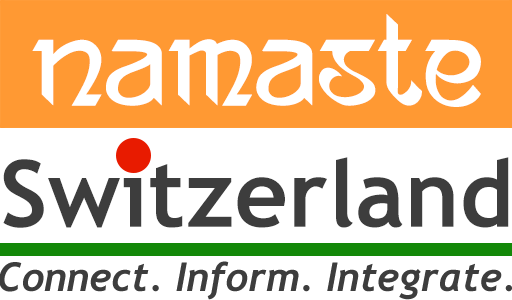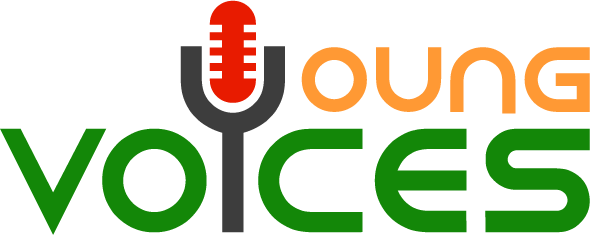While we are settling into a new routine during these Covid-19 times, there is a whole score of individuals working hard to ensure that we can get past this in a safe and secure way. On Easter Monday morning, when we were all relaxing at home, one lady in Geneva, walking to work through a longer, more scenic route stopped to catch a breath before she began work.
She is Dr Soumya Swaminathan, Chief Scientist at WHO. She is a paediatrician who has worked in tuberculosis and HIV research. She went on to become the Director-General of the Indian Council of Medical Research (ICMR), India before being appointed as the Deputy Director General at the WHO in 2017.
Role and work at WHO
After Dr Swaminathan moved here two and a half years ago, the team under the Director-General laid out a five-year strategic plan. The ambitious plan, she describes “are the Triple Billion goals. What we said is in five years, 2019 to 2023, you should have one billion more people receiving universal health coverage, one billion more people protected from health emergencies and outbreaks and one billion more people living healthier lives. These are all related, of course, to the Sustainable Development Goals.”
IN 2019, WHO undertook a transformation of the organization, creating a much-required new group focusing on Science. They appointed Dr Swaminathan to head and execute their vision and strategy. She took up the task and immediately created departments with three main areas of focus. Expanding on them, she says “one was on Research – promoting and setting research priorities, policy and tools, ensuring more research is conducted on priorities of developing countries and that funding flows can be tracked. We also wanted to focus on increasing investments on product development meant for neglected diseases and neglected population. The second area was Norms and Standards which is, of course, is WHO’s bread-and-butter, but we did not have a centralized quality assurance mechanism. Every technical department was doing it in a slightly different way. So, we created the department called The Quality Assurance of Norms and Standards which would be the clearinghouse and check for potential risks. The third area is Digital Health and Innovation. Since the whole world is going to be digital, WHO really needed to focus on this and support countries especially the low-income countries on how they can digitize their health services and to really use the technology that’s available to deliver universal health coverage. This way we are able to contribute to the five-year strategic plan.”
How does WHO’s coordinate information with all the countries? She states that “We have six regions and each region has a regional office. We also have country offices in 150 countries. The idea is that global guidance is produced here, of course, based on all the best available evidence. The regional and country offices use the overall framework and guidance but then they can adapt it to their needs.”

Preparing for Pathogen X
Dr Swaminathan reveals how WHO has been preparing for the situation we are in right now. During the Ebola outbreak in West Africa in 2014-15, there were many small studies conducted and vaccines and therapeutics being discovered but nothing took fruit because of a lack of a coordinated research plan and framework. Post this, WHO took on the task to set up the R&D blueprint. She explains that they “basically focus on 10 priority pathogens, which are deadly, can cause outbreaks and are neglected, these include Ebola, NIPAH, ZIKA, MERS and others and something called “Pathogen X”. Pathogen X was put in the list because it was recognized that there would be a pandemic some day from an unknown pathogen, most likely a virus and the world could prepare for it”.
Astonishing as that seems, she informs about another organization called Coalition for Epidemic Preparedness Innovations (CEPI) that was formed post the 2015 Ebola epidemic to specifically develop vaccines against these diseases – relying on WHO guidelines. The R&D blueprint, hence, lays out a research roadmap for each disease – providing guidance for Research and Development, from diagnostics to ideal characteristics of vaccine, therapeutics and treatments. CEPI following these rules have made inroads into vaccines for multiple diseases and now, obviously, are focusing on COVID-19. They are supporting ten vaccine candidates. Switzerland has recently contributed also CHF10 million to CEPI.
Therapeutics and Vaccines for COVID-19
Asking specifically about how WHO is coordinating treatments for COVID-19, Dr Swaminathan says that “R&D Blueprint has landscaped what is being developed in vaccines and in therapeutics. We have the Solidarity Trial going on now for therapeutics. We have started with repurposed drugs and these are Choroquin, Remdesivir, (tested for Ebola but not successful), Lopinavir and ritonavir (anti-HIV drug) and Interferon-beta. We have designed a clinical trial that could test these four repurposed drugs against a standard of care, and more than 100 countries have expressed an interest in joining this trial. We have started enrolling about two weeks ago with the hope that, in the next few weeks or months, we’ll be able to complete this trial so that we can have robust results available. Right now, there’s not yet a single drug that’s been approved against COVID.” Switzerland is part of this trial.
What about vaccines? She responds that “We’ve done a lot of background work. We have several expert groups that advise us. They are doing a lot like you need new animal models to test the vaccines. There was none before for this virus. So many groups around the world collaborated to develop that and it is now more or less standardized. Then you need standardized tests, antibody tests and other kinds of assays which you will use for testing. And then, of course, we need to prioritize the vaccine candidates. There are currently at least 75 candidates which are in active development. There are 8 candidates in Phase 1/2 trials. So, we will have candidates, I think, in the next two-three months that we can really start looking at in further detail. Like, what is the immunogenicity? What is its safety profile? etc. and make decisions on which one should go into the phase 2/3 trials. We will coordinate all that work. We’ve also now developed the protocol to use, like Solidarity trial for therapeutics, and would like a big multi-country effort for the vaccine.”
When and how can life go back to “normal”?
Dr Swaminathan chuckles, probably having been asked this difficult question many times. She explains, “It’s a new virus that we’re seeing for the first time. We’re learning about it every day. And there is no crystal ball really to look into and say how all of this is going to end. But there are possibilities, of course. One is that the virus somehow mutates, becomes less transmissible and stops causing so many explosive outbreaks. Second is that people develop immunity with this virus as time goes on. We know that you will need a large proportion of the population, like over 60 per cent, to develop immunity to have what is called, the herd immunity. So, it’s not going to happen very quickly. It will take time. The third, which is what we hope happens is, we will have a vaccine which will start protecting those who are most vulnerable. And the others could either develop a natural infection or slowly you will develop enough herd immunity in the population by vaccinating more people. That would be the way I guess we could save most lives. That would be ideal.”
Can this happen in 6 months to a year? She responds “If it would happen in a year, it would be a record. What we’re saying is 12- 18 months. We’re doing everything possible to make this happen in 12 months or less. But it’s really going to require unprecedented global efforts and global collaboration also.”
Preparedness for the future
I enquire whether countries could have been better prepared. She is quick to say “That’s a good question. WHO has been saying this for a long time, that countries need to make their health systems ready and have a pandemic-preparedness plan. No one has ever taken it seriously, including high income countries and not just the low-income ones. And they have been hit so hard now. Just not been able to cope.”
What can governments do now for the future? “I hope now the countries will take it seriously and ensure that next time something like this happens, they are much better prepared. There are several pillars that need to be strengthened. You must have good surveillance systems. and good primary health care.”
At the population level, what change is needed? “The population needs to have some amount of health literacy, understand how diseases spread. Community engagement is critical” .
And what she next says hits home. She advises that we all need a behavioural change. For example, covering your mouth while coughing, not shaking hands anymore, which is a big change in the West, and, for India, not spitting in public places. In general, “all the basic things of personal hygiene have to become the norm.”
So how does one enable behavioural change? She rightfully points out that to enable a change, the government must make it possible to abide. For example, she explains, you cannot tell people to wash their hands without running water and maintain personal hygiene without sanitation facilities. As she says, “a lot of investment is needed in those areas.” I immediately imagine how we leave the tap open for the 20s, when there are people without water!

Work-life and Switzerland
Moving on from COVID, I ask her how similar or different her role in WHO is, compared to ICMR, India? She finds that both roles are “in visible positions where you have to make decisions, deal with a lot of different stakeholders and views, and then come to a conclusion, justify that, stand by it and rationalize it”. Even though India is a big country, she finds when working here, “the scale of it is very different, there are many different kinds of stakeholders. But also, what you do here can have a very large impact beyond one country”.
Talking about how her career in India has helped her here, she feels that she could bring the reality of lower and mid-income countries to the table. When interacting with her colleagues regarding different diseases, she can tell them the ground reality in these countries, what will work and not and hence, what kind of guidance WHO can give these countries that is relevant.
After discussing such phenomenal work, I wonder, did she even have time to explore Switzerland in the last 2.5 years. She says an emphatic “yes”. She loves travelling, exploring and the outdoors. She says that she enjoys the beauty this country has to offer when you step out of one’s house. To soak in more, she has joined hiking groups and has been hiking through all seasons. She particularly loved her stay at a small village near Chamonix along the Mont Blanc range in France. In Switzerland, she likes the Lauterbrunnen, Grindelwald and Jura Mountain regions.
Talking about differences between India and here, she expresses how in India there is a more community lifestyle and interaction with neighbours. Thankfully, since she has a good Indian community network through work, she doesn’t miss it as much. She tries to attend community and festivity events as much as time permits her. But what she misses most about India is, of course, her family and the opportunity to contribute to India through her work which she had been doing most of her life.
Dr Soumya Swaminathan is a truly dedicated Indian healthcare professional who is enjoying her stint in Switzerland and contributing immensely, especially at a time like this.
Disclaimer: Written in good faith, we do not undertake any financial/reputational impact or other obligations/liabilities that may arise from the content.












